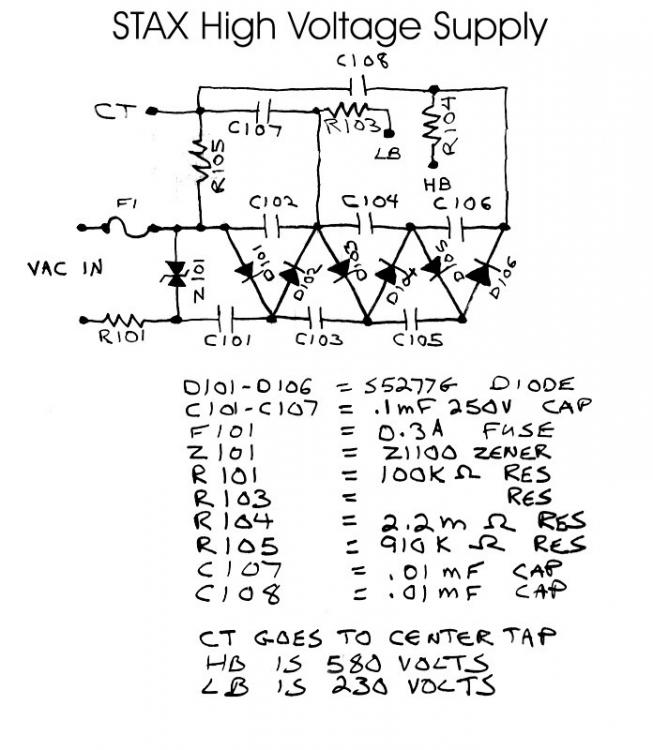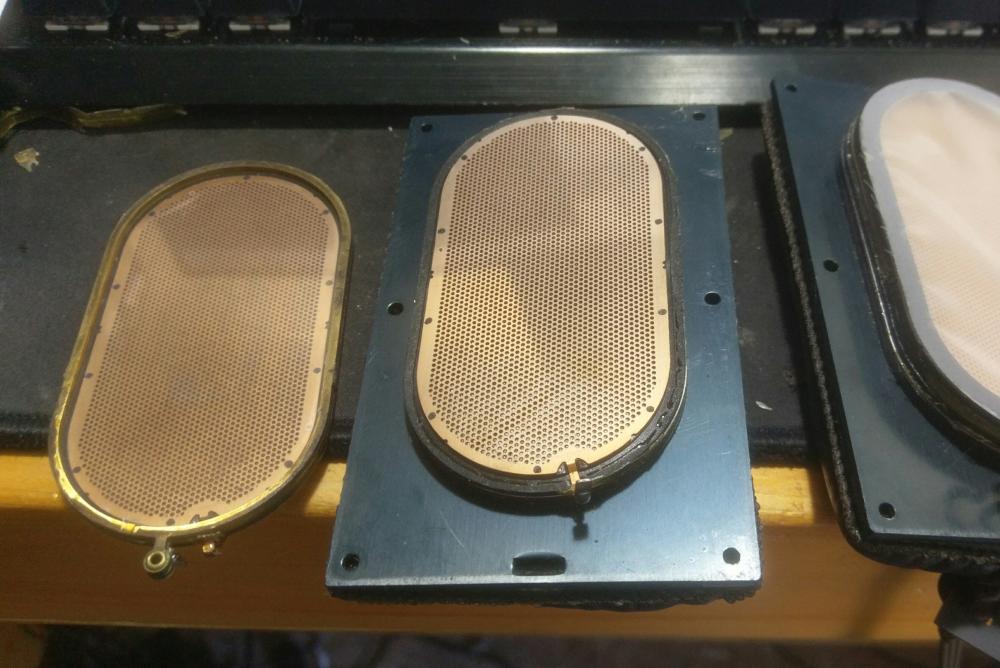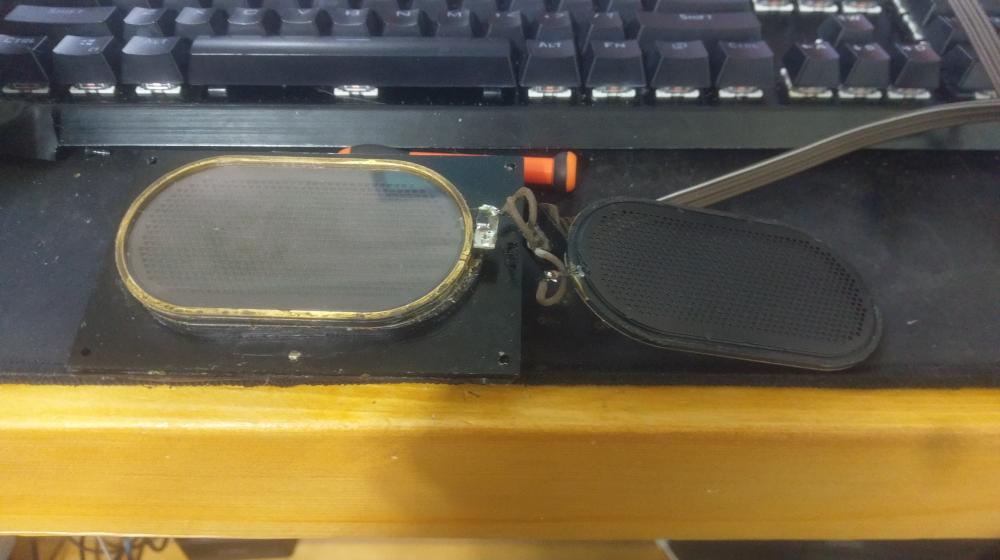-
Posts
112 -
Joined
-
Last visited
Profile Information
-
Interests
Electrostatic Headphones. Normal Bias Lambdas.
-
Location
Between a pair of Lambda Signature (:o) drivers.
-
Gender
Male
Converted
-
Occupation
Security Advisor
-
Hobbies
Stax or die!
-
Headphones
STAX SR-Lambda Normal Bias, STAX SR-Lambda Signature, STAX SR-Lambda Nova Signature, STAX SR-002, STAX SR-X MKIII, STAX SR-5
-
Headphone Amps
STAX SRM-727 (spritzer mod, normal bias mod),STAX SRM-002, STAX SRM-1 MK2
-
Sources
Schiit Bifrost Uber, Sony Playstation SCPH-1001 modified output stage.
-
Other Audio Gear
Normal bias Lambda is best Lambda.
Recent Profile Visitors
4,332 profile views
Arthrimus's Achievements

Limited Edition Bronze Participant (4/6)
62
Reputation
-
My 727 has that same transformer. It's a pity, I have to use a step down transformer.
-
This circuit is universal it has a bidirectional 100v Zener Diode on the input that limits the voltage to 100v for the multiplier so it can work worldwide. It's basically Stax's SRD-7 Pro circuit, with a couple of components reorganized to fix their mistake of putting R103 and R104 before C107 and C108 instead of after. Z101 can be substituted with 2 back to back unidirectional 100v zener diodes if a bidirectional one can't be found. I've used a pair of 1N527 for this. Also you can sub 1N4007 diodes for D101-D106.
-
This is what you want. I've built it several times. Only issue is R103 and R104 should be 4.7m. You probably want to replace the bias circuit in the WEE entirely if you want to be safe.
-
Now that all fear of taking apart Lambda drivers is gone I went out and acquired a Lambda Signature with channel imbalance. Drivers came apart just as easily (not incredibly easy) as my LNS driver. Recoated and singing beautifully. Lambda collection intensifies!
-
A very very thin coat of contact cement.
-
I used Endust antistatic gel. It's the same stuff I used to recoat my SR-5s a couple of years ago and it's held up fine.
-
Well... The channel imbalance is gone. Thanks for the help Pirx and DefQon. Your posts gave me just enough information to get confident. The driver split apart just as expected and the recoat went without incident. They're singing properly for the first time since I've had them!
-
While that doesn't fill me with confidence, I might take a crack at it if there are no other options. Can you explain the process you used for success?
-
I've got a question for the great Stax minds here on Head-Case. My SR-Lambda Nova Signatures have had minor channel imbalance from the day I got them almost a year ago. Since then the imbalance has not gotten any worse so I believe them to be stable. Obviously recoating the drivers is not realistically possible, but I was wondering if anybody had any ideas for a method of electrically attenuating the louder driver to match the quieter one without having split volume control on the amp. It would be awesome if I had a solution that wouldn't require L/R adjustment on the amp or source. The exact electrical properties of electrostatic headphones elude my understanding so I really don't know.
-

GRLV split and combined, and any other boards Group Buy
Arthrimus replied to sbelyo's topic in Do It Yourself
Is it too late to join? -
No doubt, but it's the apex of soldering. You can actually pick up retired factory production line Metcal systems for dirt cheap on ebay, that's how I got my soldering station and deslodering gun.
-
I haven't started building my board yet, but the pitch on the regulator appears to be about the same as tsop40 and some qfp packages I'm used to soldering/desoldering. I'd recommend positioning the regulator on the board and holding it in place with tweezers. Flood the area with no clean flux, then with a fine chisel tip try to tack down one corner of the regulator, then move to the opposite corner, adjust the positioning if necessary then tack that corner down. Reflux the chip and load your tip with solder then drag it accross the remaining sides of the chip until you have all contacts soldered. If you have any bridges, then reflux the chip, clean your iron and drag it across any side of the chip that has bridges. Repeat as necessary until you've cleared all shorts, reapplying flux as needed. I personally only like to use hot air for removing large packages and reworking BGA packages. I really don't think it's any good for soldering projects like these. A reflow oven would be much better for this, but my personal preference is always hand soldering if possible. EDIT: Now that I look at the regulator a little better, hot air might actually be the way to go. I didn't realize that there was actually a pad on the underside of the chip. Solder paste and hot air is probably the best bet for this one. [whisper] Ditch Hakko... buy Metcal...[/whisper]
-

CLOSED: Alpha/Song Huei Potentiometer Group Buy and TKD Attenuators
Arthrimus replied to cspirou's topic in Do It Yourself
Paid. Paypal primary address is correct. Thanks. -
I wonder, would it be possible/practical to split the Blue Hawaii power supply in the same way that the GRHV power supply is split? I only ask because the split configuration provides so much flexibility, and the BH power supply is so much more affordable than the GRHV for projects like this and the SRX+.
-

TKD 4CP-601 & 4CP-2500 4-gang volume pot and PCB GB
Arthrimus replied to mwl168's topic in Do It Yourself
Payment for flat rate shipping sent.






